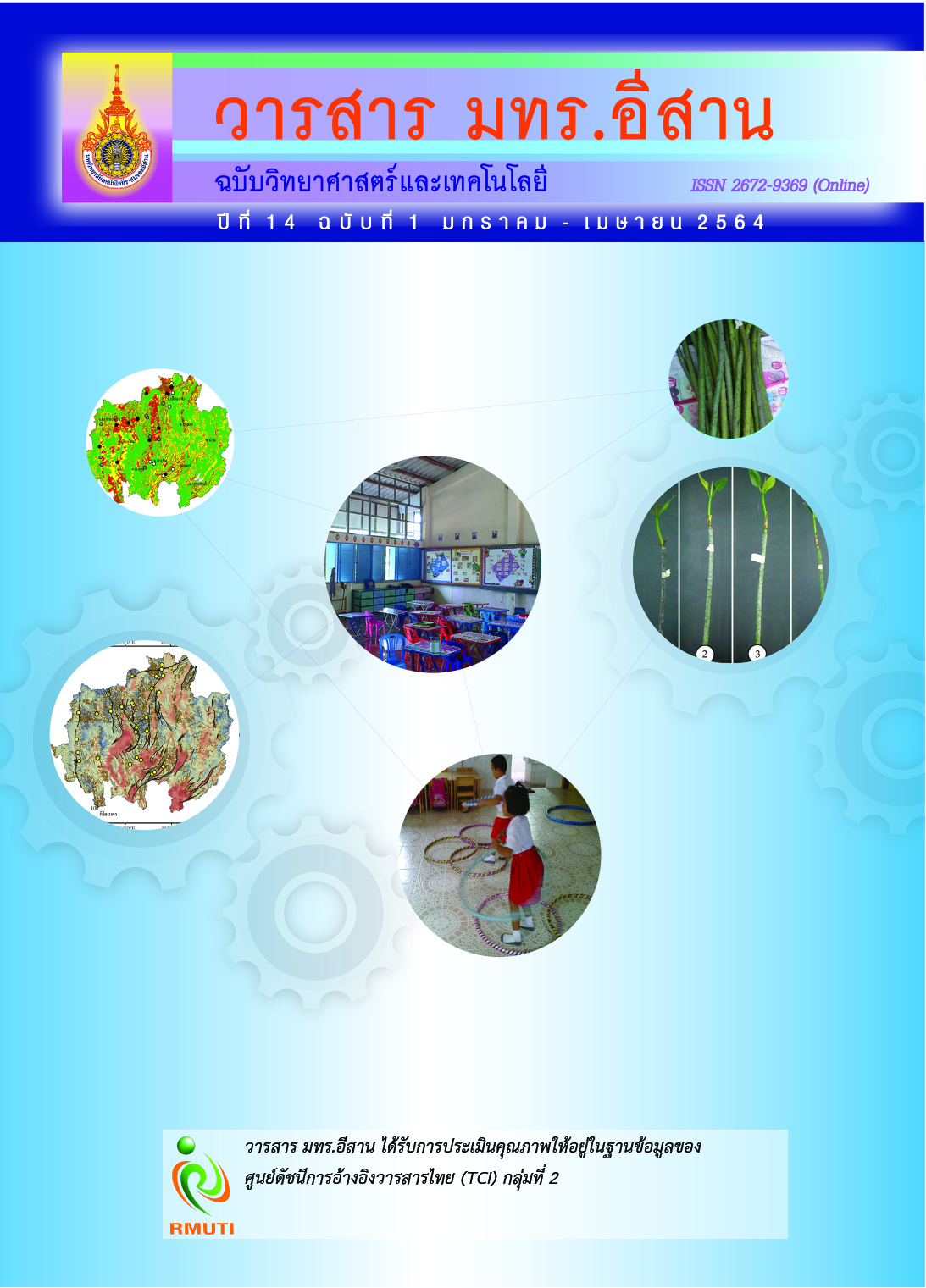A Comparison of Methods for Estimating Fine Particulate Matter Concentrations from Himawari-8 Satellite Over Northern Thailand
Main Article Content
Abstract
Particulate Matter 2.5 micrometres and smaller (PM2.5) could be measured by an instrument at ground-based observatory. But the ground-based observatory cannot provide the data covering wide area. Currently, remote sensing is used to be an application to estimate PM2.5. To address capability of PM2.5 estimation method, the study carried out comparing two methods for estimating PM2.5 concentrations between Multiple Linear Regression (MLR) and Principal Component Analysis - General Regression Neural Network: PCA-GRNN. By using Aerosol Optical Depth (AOD) from Himawari-8 satellite and physical data such as the Digital Elevation Model (DEM), Normalized Difference Vegetation Index (NDVI) and meteorological data during January to December 2018. The estimation results from those two methods were evaluated by PM2.5 concentration from ground-bases measuring. The evaluated results show that the PCA-GRNN obtained the root mean square error (RMSE) of 17.76 and R2 of 0.566, while the MLR obtained RMSE of 33.90 and R2 of 0.012. Therefore, it is indicated that PCA-GRNN is an appropriate method to estimate PM2.5 concentration over Northern Thailand more than the MLR.
Article Details
References
Greenpeace. (2016). Right to Clean Air. Access (5 March 2019). Available (http://www.greenpeace.org/seasia/th/)
Pollution Control Department. (2005). Situation and Management of Air and Noise Pollution Problems in 2004. He’s Company Limited Publishers. (in Thai)
Air Visual. (2018). World AQI Ranking. Access (6 March 2019). Available (https://www.airvisual.com)
Pollution Control Department. (2011). Know About Air Pollution, Pessons Concepts and Management. Kochakorn Publishing Publishers. (in Thai)
Guo, J., Xia, F., Zhang, Y., Liu, H., Li, J., Lou, M., He, J., Yan, Y., Wang, F., Min, M., and Zhai, P. (2016). Impact of Diurnal Variability and Meteorological Factors on the PM2.5 - AOD Relationship: Implications for PM2.5 Remote Sensing. Environmental Pollution. Vol. 221, pp. 94-104. DOI: 10.1016/j.envpol.2016.11.043
Zhang, W., Xu, H., and Zheng, F. (2018). Aerosol Optical Depth Retrieval Over East Asia Using Himawari-8/AHI Data. Remote Sensing. Vol. 10, Issue 137, pp. 1-19. DOI: 10.3390/rs10010137
Hirtl, M., Mantovani, S., Kruger, B. C., Triebnig, G., Flandorfer, C., Bottoni, M., and Cavicchi, M. (2014). Improvement of Air Quality Forecasts with Satellite and Ground Gased. Atmospheric Environment. Vol. 84, pp. 20-27. DOI: 10.1016/j.atmosenv.2013.11.027
Wiratchai, N. (2010). Multiple Linear Regression. Sukhothai Thammathirat Open University Publishers. (in Thai)
Zang, L., Mao, F., Guo, J., Wang, W., and Pan, X. (2018). Estimating Hourly PM1 Concentrations from Himawari-8 Aerosol Optical Depth in China. Environmental Pollution. Vol. 241, pp. 654-663. DOI: 10.1016/j.envpol.2018.05.100
Al-Mahasneh, A. J., Anavatti, S., Garratt, M., and Pratama, M. (2018). Applications of General Regression Neural Networks in Dynamic Systems. Digital Systems. pp. 133-154. DOI: 10.5772/intechopen.80258


